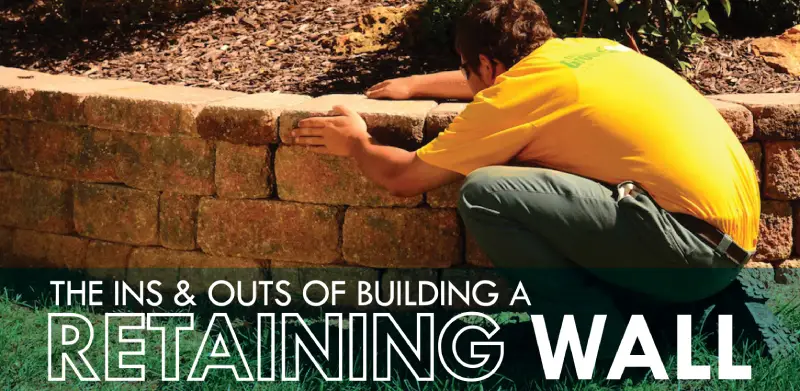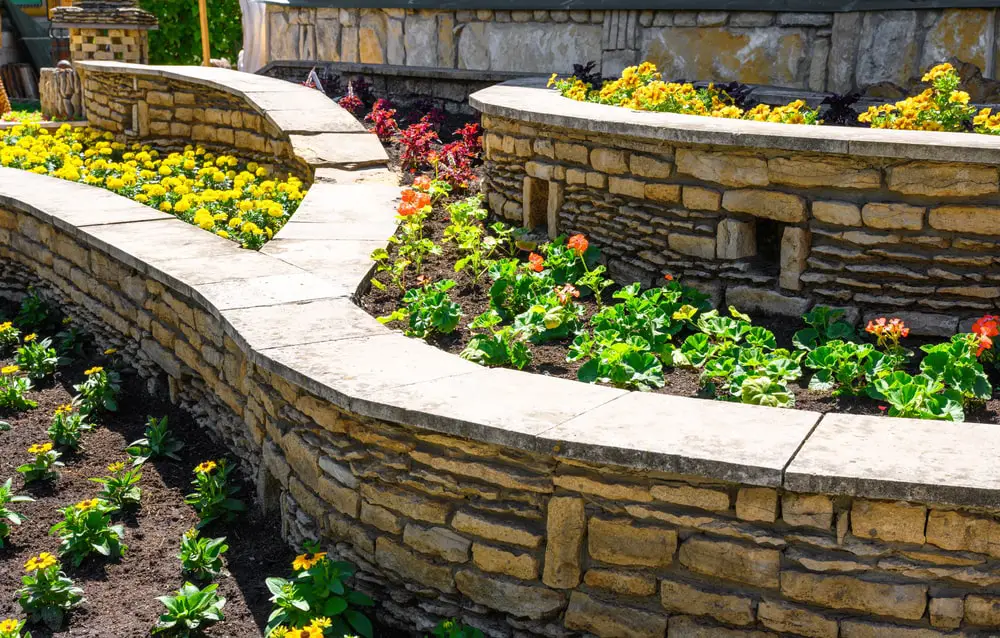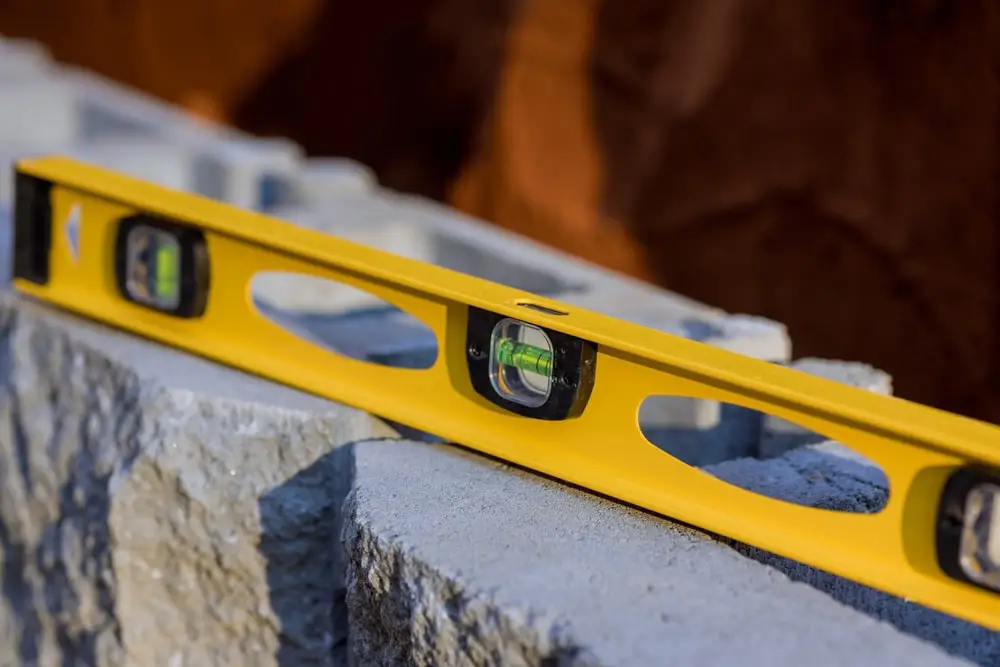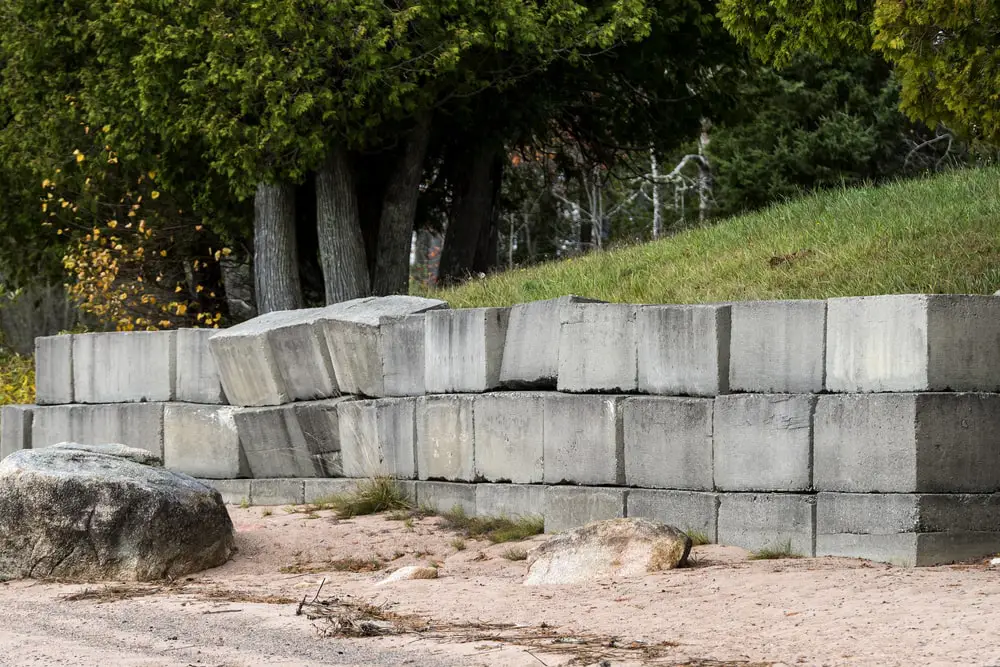The Ins and Outs of Building a Retaining Wall

Last Updated December 1, 2023
Let’s face it, not every yard is perfect. Nature is uneven, unpredictable and uncontrollable. Sometimes there is a hill where you want it to be flat, and sometimes it’s flat, where you might prefer a hill. Take control by building a retaining wall in your yard.
Table of Contents:
The Benefits of a Retaining Wall for Your Landscape

Retaining walls hold many different purposes:
- Turn a hill into a multi-level landscape
- Level a yard that was previously on a hill
- Create a raised garden or patio
The benefits of retaining walls include preventing erosion and flooding and holding soil in place. They can be built in straight lines, curved, or even zigzagged. While it may seem like a daunting task, the experts at The Ground Guys are here to show you how to make a strong and sturdy retaining wall.
Retaining Wall Materials

The first step in building a retaining wall is choosing what material to use. The most common materials include:
- Stone: aesthetically pleasing and very long-lasting
- Natural rocks
- Concrete: easy to install inter-locking-blocks make DIY easier
- Bricks
- Timber: affordable and can last up to 40 years
- Stucco
The start to every strong retaining wall is a strong foundation. Start by digging a hole in the ground at the base of the wall, this hole can be about a tenth of the height of the wall you are building. Place your foundation, or footing in the hole to prevent the base of the wall from sliding out. Reinforced concrete works great as a strong and dependable base.
How to Build a Retaining Wall

Now, it is time to begin building your wall. Follow these steps to build a retaining wall in your yard:
- Begin by firmly placing your base level on top of the foundation. Remember to leave a small gap between your retaining wall and the soil for the drainage rock or reinforcement grid.
- As you begin to build the wall higher, it is important to stagger or offset each level. This will guarantee that no vertical seems to line up, giving you a stronger wall. A three-inch stagger is typical for most walls.
- An interesting feature of a retaining wall is that it is built on a retreating slope or batter. By building the wall at an angle, the wall can better handle the weight of the soil behind it. For an easy-to-install batter, use interlocking blocks that a designed to stack easily.
- Build your wall high enough so that it is at least a few inches higher than the soil level behind it. Keep in mind that a wall taller than four feet will require more support than a shorter wall.
- For walls taller than four feet, install a flexible reinforcement grid every three layers in the gap area between the soil and wall. This reinforcement grid, which provides the wall with extra support, should lay flush against the back of the retaining wall. Fill the area in between each grid with compacted dirt to ensure a strong and fully supported wall.
- For walls less than four feet, fill the area between the wall and the soil with drainage rock. Drainage rock easy is loose gravel that can be purchased at your local hardware store and is essential to prevent the build-up of pressure behind the wall.
- Once the gap area has been filled to the appropriate height, cover the area with a layer of dirt and topsoil. Now it’s up to you to decide what to do with the newly leveled area!
Retaining Wall Repair

Over time, gravity may take its toll on the retaining rock. Look for these signs that tell you when it’s time to repair or reinstall a new wall.
- Leaning: If the wall isn’t vertical, it’s not doing its job.
- Broken: If parts of the wall begin to break off, it is probably time for a new wall.
- Bulging: When part of the wall begins to stick out like a bruise, that is a sign the wall is either not anchored properly, or there is pressure build-up.
If you have any questions about how to build a specific type of retaining wall, or if you feel unsure about building one yourself, request a job estimate with The Ground Guys. We can help you with any of your hardscape needs.
 Click to call
Click to call


